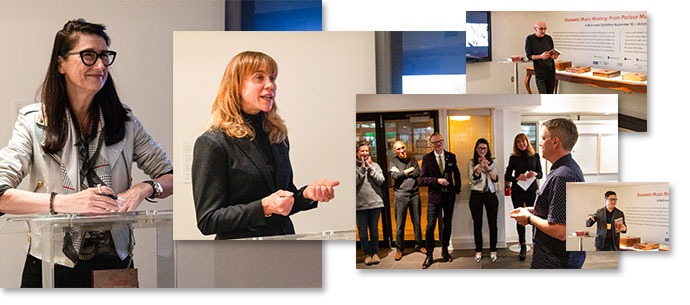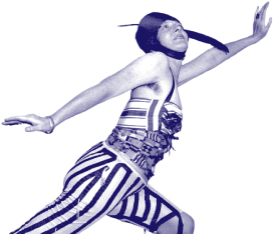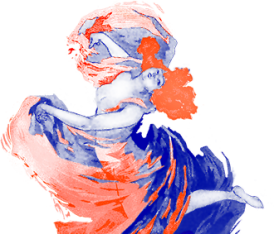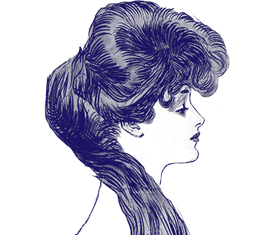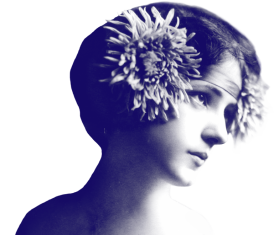 Florine Stettheimer:
Florine Stettheimer:
New Directions in Multimodal Modernism
Edited by Irene Gammel and Suzanne Zelazo
Toronto: Book*Hug, 2019
“Florine Stettheimer is my favourite artist.”
— Andy Warhol
Florine Stettheimer (1871-1944) was Modernism’s great “outlier”—a highly original artist with a boldly interdisciplinary aesthetic that attracted such luminaries as Marcel Duchamp, Georgia O’Keefe, and Andy Warhol. They understood, admired, and were inspired by Stettheimer.
This collection of essays by a wide range of contemporary writers and thinkers explores the multimodality of Stettheimer’s creative output and the salon culture by her and her sisters Carrie and Ettie in New York from 1915 to 1935. Florine Stettheimer: New Directions in Multimodal Modernism theorizes, engages and situates Stettheimer’s innovative contributions to art history and illustrates the aesthetic genealogy of her vision and its influence through to the contemporary moment.
With contributions by Barbara Bloemink, Georgiana Uhlyarik, Chelsea Olsen, Zach McCann-Armitage, Patricia Allmer, Lesley Higgins, Aaron Tucker, Melba Cuddy-Keane, Jason Wang, Cinti Cristia, David Dorenbaum, Irene Gammel and Suzanne Zelazo.
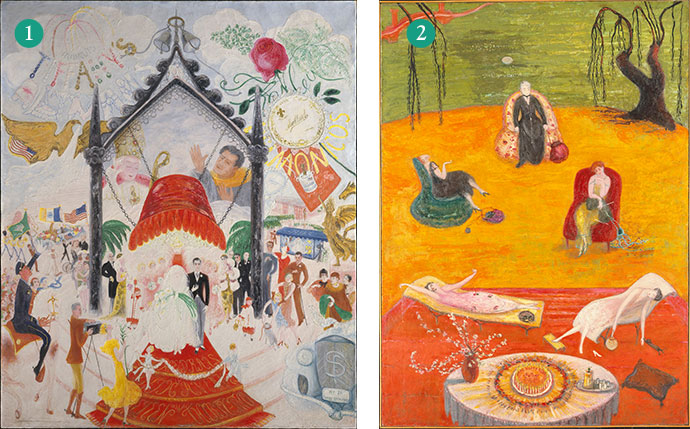
From the Editors' Introduction
“We argue that the long-lasting contributions made by the Stettheimers lie in fostering sites of an in-between, which ultimately, to apply Juergen Mueller’s words, “leave their traces in the material itself or the media products, but also in their meanings and in the interactions with their users and recipients.” The new scholarship presented hopes to sensitize and nuance scholarly thinking of multimodality, revealing the sophisticated multimedia strategies used by women who innovated a dynamic, novel, and prescient art practice. This is an approach we first advanced in our article “Wrapped in Cellophane,” discussing Florine Stettheimer’s consistent integration of poetry and painting, but which requires systematic and comprehensive exploration with respect to our Stettheimer case study. Why does the work of the Stettheimer sisters fascinate readers and viewers today? What impact have women’s alternative art practices had in liberating female artists or keeping them confined to the home? To what extent can we recuperate the open-ended and ephemeral nature of the salon’s live performance through its documentation? How does temporal displacement of the original live event affect its impact through translation into another medium? Can we recuperate the corporeal of an original dance performance through gestures recorded in painting? And how do the salon dynamics affect the boundaries of media and authorship by encouraging collaboration? What is it exactly that makes the collision of media so fertile and open-ended? These are but some of the questions that are tackled by the international group of authors represented in this collection, including renowned art historians and curators, cultural, literary, and feminist critics, as well as emerging scholars whose work focuses on music, games, and performance.”
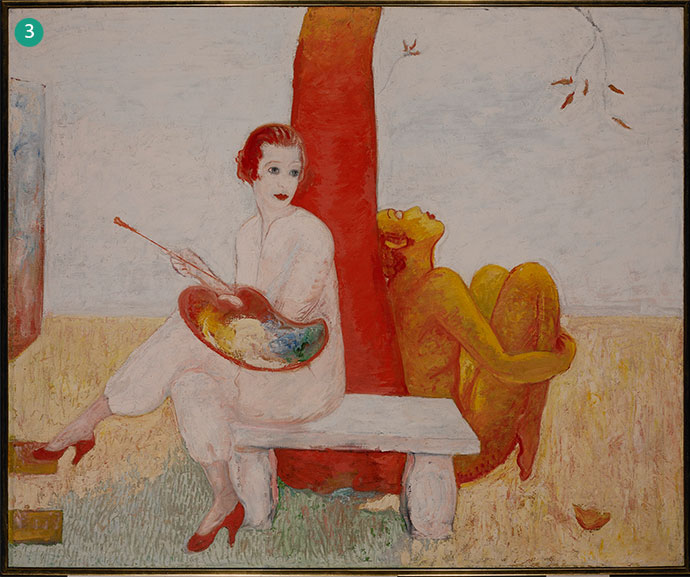
Table of Contents
Chronology
Introduction: “Seen in Color and Design”: Florine Stettheimer’s Multimodal Modernism / Irene Gammel and Suzanne Zelazo
Part One: (En)Gendering the Artist’s Space
- Florine Stettheimer for the 21st Century: Moving Beyond the Marginalizing Myths / Barbara Bloemink
- Curating Florine Stettheimer: Reflections on an Exhibition / Georgiana Uhlyarik
- “Very affectionately to all three of you”: The Duchamp-Stettheimer Correspondence / Zach McCann-Armitage
- Configuring a Feminist Sisterhood: The Case of Ettie’s Memorializing / Irene Gammel and Chelsea Olsen
Part Two: The Temporalities of Art
- Temporalities: Stettheimer’s Baroque Modernism / Patricia Allmer
- American Minimalists: Dickinson, Williams, Stettheimer / Lesley Higgins
- Shifting Sister Squares: Florine Stettheimer’s Portraits of Marcel Duchamp / Aaron Tucker
Part Three: Embodied and Performative Art Practices
- Florine Stettheimer’s Wave and Modern Dance: Reading through Embodied Cognition / Melba Cuddy-Keane
- Painting Jazz: Sound, Music, and Rhythm in the Work of Florine Stettheimer / Cintia Cristiá
- Miss Flutterby: Florine Stettheimer’s Dispassionate Flâneuse and Subversive Urban Consumer / Jason Wang
- “An Opera to be Sung”: Intermediality and the Making of Four Saints in Three Acts / Irene Gammel and Suzanne Zelazo
Coda: Developing the Photographic Negative: Florine Stettheimer’s Resistance as Subject of Analysis / David Dorenbaum

Editors' Biographies
Irene Gammel is a professor at Ryerson University where she directs the Modern Literature and Culture Research Center and supervises many graduate students on topics related to gender, the body, and fashion. With Suzanne Zelazo, she is the co-editor of Crystal Flowers: Poetry and a Libretto by Florine Stettheimer (Book*Hug) and Body Sweats: The Uncensored Writings of Elsa von Freytag-Loringhoven (MIT Press). She is the author and editor of fourteen books including Looking for Anne of Green Gables (St. Martin’s Press), and Baroness Elsa: Gender, Dada, and Everyday Modernity (MIT Press).
Suzanne Zelazo is a writer, editor, educator and publisher in the visual and literary arts, as well as in sport. She holds a PhD in English with a speciality in female modernism and avant-garde poetry and performance. Her projects seek to integrate creative expression and the body. She is the author two collections of poetry, Lances All Alike and Parlance, and editor of Janieta Eyre: Incarnation, all published with Coach House. With Irene Gammel, she is the co-editor of Crystal Flowers: Poetry and a Libretto by Florine Stettheimer (Book*Hug) and Body Sweats: The Uncensored Writings of Elsa von Freytag-Loringhoven (MIT Press).
Reviews and Comments
New Directions in Multimodal Modernism embodies a new approach to scholarship on Stettheimer, both by those featured within the book’s pages as well as by a new generation of scholars ... the authors gathered in this volume succeed in dismantling the long-standing myth that Florine’s work is nothing more than surface-level pleasure, all while embracing the eccentric and bold personality of Florine Stettheimer and her familial, artistic, and social circle.
–Margaryta Golovchenko, Art History, University of Oregon; in RACAR: revue d'art canadienne / Canadian Art Review,
vol. 46, no. 2, pp. 144‑46.
The Stettheimer sisters, surely among the most remarkable of modernist practitioners in several genres, have an appropriate tribute from many expert hands.
–Mary Ann Caws, in Modernism/modernity (Johns Hopkins UP), volume 7, cycle 1, 30 June 2022. Read the Review
Book Launch
Florine Stettheimer Book Launch & Reception from MLC Research Centre on Vimeo.
View more photos from the book launch which took place Saturday, October 19, as part of MSA Toronto 2019.
Image Credits
- Florine Stettheimer, The Cathedrals of Fifth Avenue, 1931, oil on canvas, 142.4 x 127 cm. The Metropolitan Museum of Art, Gift of Ettie Stettheimer, 1953 (53.24.4). Image copyright ©️ The Metropolitan Museum of Art. Image source: Art Resource, NY.
- Florine Stettheimer, Heat, oil on vancas, 127 x 92.7 cm. Brooklyn Museum, Gift of the Estate of Ettie Stettheimer, 57.125.
- Florine Stettheimer, Self-portrait with Palette (Painter and Faun). Art Properties, Avery Library, Columbia University, Gift of the Estate of Ettie Stettheimer, 1967 (1967.17.011).
- Florine Stettheimer, Family Portrait I, 1915. Art Properties, Avery Library, Columbia University, Gift of the Estate of Ettie Stettheimer, 1967 (1967.17.011).
- Florine Stettheimer, A Model (Nude Self-Portrait). Art Properties, Avery Architectural & Fine Arts Library, Columbia University, Gift of the Estate of Ettie Stettheimer, 1967 (1967.23.029).



